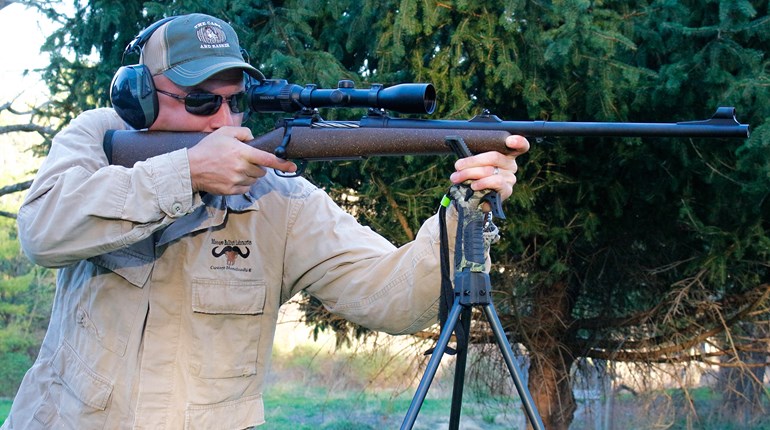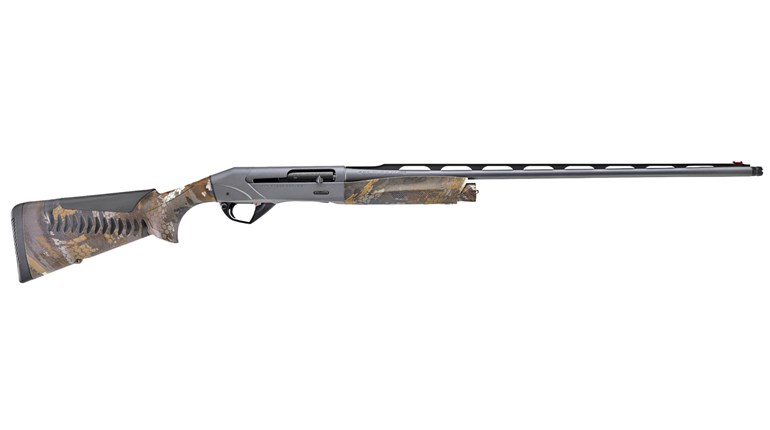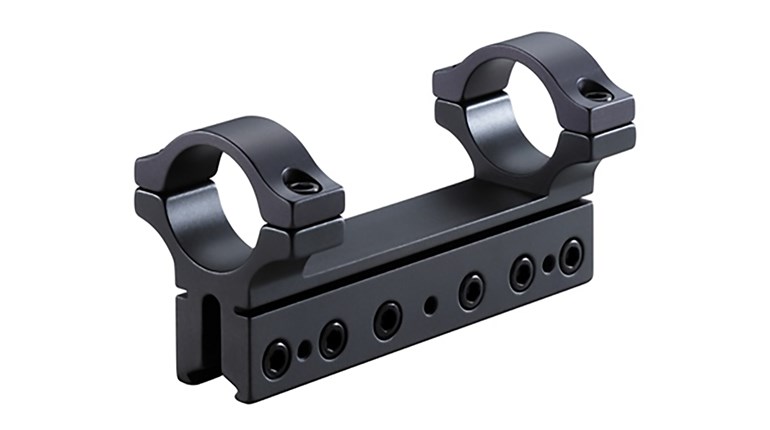
At the turn of the century, Winchester had piled up a whole bunch of successful rifle designs, due in no small part to the genius of John M. Browning. However, the cartridge side of the company wasn’t exactly sitting on their laurels; the iconic .30-30 Winchester was gaining a big head of steam, designed to be used with both smokeless and blackpowder alike, and its younger brother the .32 Winchester Special had just been introduced to America. While that pair of excellent cartridges was based on the .38-55 Winchester case, the gentlemen at Winchester were simultaneously experimenting with the .45-70 Government case.
It didn’t prove to be the easiest task, as the team took more than a decade before arriving on a useable design. The initial attempt resulted in a 31-62 cartridge (.31-caliber, 62 grains of powder), though the pressures generated by that experimental cartridge was more than even the strong Model 1886 Winchester could handle. By 1902, Winchester had the formula they were after and the .33 Winchester was released to the shooting public.

Using the same rim diameter as the .45-70 Government at .610 inches and the same case length at 2.11 inches, the .33 Winchester—often known as the .33 WCF—was the first use of the .338-caliber bullets. Where the .45-70 is a straightwall cartridge, the .33 Winchester has considerable body taper, and a 16 ¼-degree shoulder with a case neck measuring .369 inches, well in excess of the often desired one-caliber in length. The .33 Winchester was only offered with one bullet—a 200-grain jacketed flat point suitable for safe use in the tubular magazine of lever-action rifles. That projectile left the muzzle at 2,200 fps, generating 2,150 ft.-lbs. of energy. In 1902, these weren’t terrible numbers at all, despite the fact that those flat-nose projectiles don’t have the most attractive Ballistic Coefficient values. Factory ammunition was produced by Winchester, Peters, Remington and others, and the .33 Winchester was chambered predominately in the Winchester Model 1886, though it was also chambered in the Winchester Model 1885 single shot, and the Marlin Model 1895 lever gun as well. A nickel steel barrel was employed on the Model 1886 rifles for the higher-pressure smokeless powder cartridges like the .33 Winchester.
As good as that Model 1886 rifle was—and is—by 1936 Winchester gave the rifle and their medium bore cartridges a facelift. The Model 71 lever-action, chambered for the .348 Winchester—a stronger rifle chambered for a faster, higher-pressure cartridge) superseded the combo of Model 1886 in .33 Winchester. While that Model 71, which was designed to be the sister of the Model 70, is an undeniable classic, there is nothing wrong with an 1886 in decent shape, chambered for the .33 Winchester. I remember reading the exploits of Mike “Duke” Venturino—who sadly passed recently—having taken his ’86 takedown in .33 WCF to Africa with good results.

Finding a serviceable 1886 in .33 Winchester isn’t too difficult; keeping it fed is another proposition altogether. To say ammunition is scarce is an understatement. You can scour the obscure ammo shops which deal routinely in this sort of thing—I like Collector Rifle and Ammo for just such a purpose—but the most dependable means of keeping a healthy supply of .33 WCF on hand is through handloading. Hornady used to make a good 200-grain flat point Interlock, of which I still have a few hanging around, but they’ve sadly discontinued that bullet. Look to a boutique bullet company like New Jersey’s Hawk Bullets, who offer not only 200-grain bullets, but 180- and 215-grain choices, or New York’s Northern Precision Custom Bullets to provide a good source of dependable projectiles. Reloading dies are, or have been, available from Redding, RCBS and C-H Tool & Die. Because of the scarcity of new cases, many .33 WCF shooters have used the plentiful .45-70 brass to from cases for their rifles; you’ll want a quality forming die like Redding’s model to work the brass down in stages, filing off the excess case length from the top of the hardened die. Powders like Winchester’s 748, Hodgdon’s H4895, IMR 4064 and IMR 3031 are all sound choices, some have even used the slower burning H4350 and IMR 4350 will good results.
I've worked with a couple .33 Winchester aficionados to work up some good hunting loads, and with that aforementioned 200-grain Hornady bullet and a healthy dose of IMR 3031, we got close to the 2,200 fps mark, with the chronograph reading 2,170 fps on average. This allowed for a 150-yard zero, with the bullet striking two-inches high at 100 yards, and six-inches low at 200 yards. That bullet will still have 960 ft.-lbs. of energy at 200 yards, though the vast majority of hunting shots with an iron-sighted lever gun will be well inside that distance.

Is the .33 Winchester the kind of cartridge that could make a comeback, in this day-and-age of long range super-magnums with bullets like icicles? It doesn’t look like it, though stranger things have happened. American shooters have an undeniable love affair with the lever-action rifles and cartridges, and one never knows when a classic might be resurrected.




































